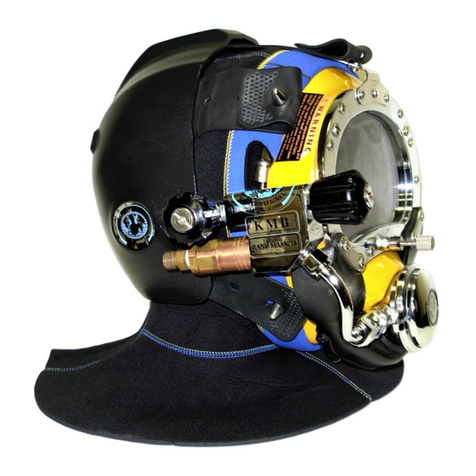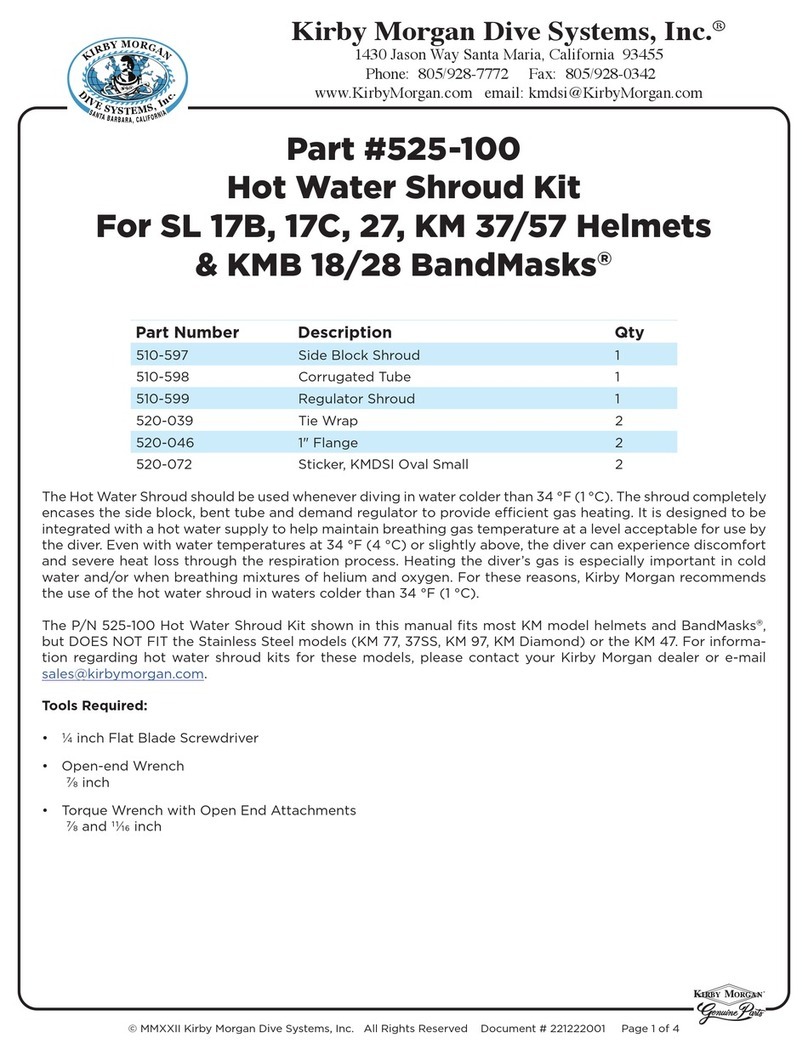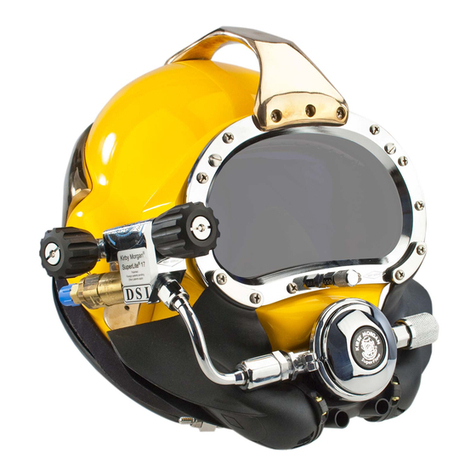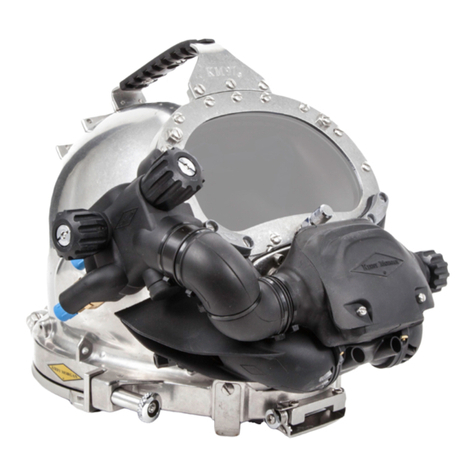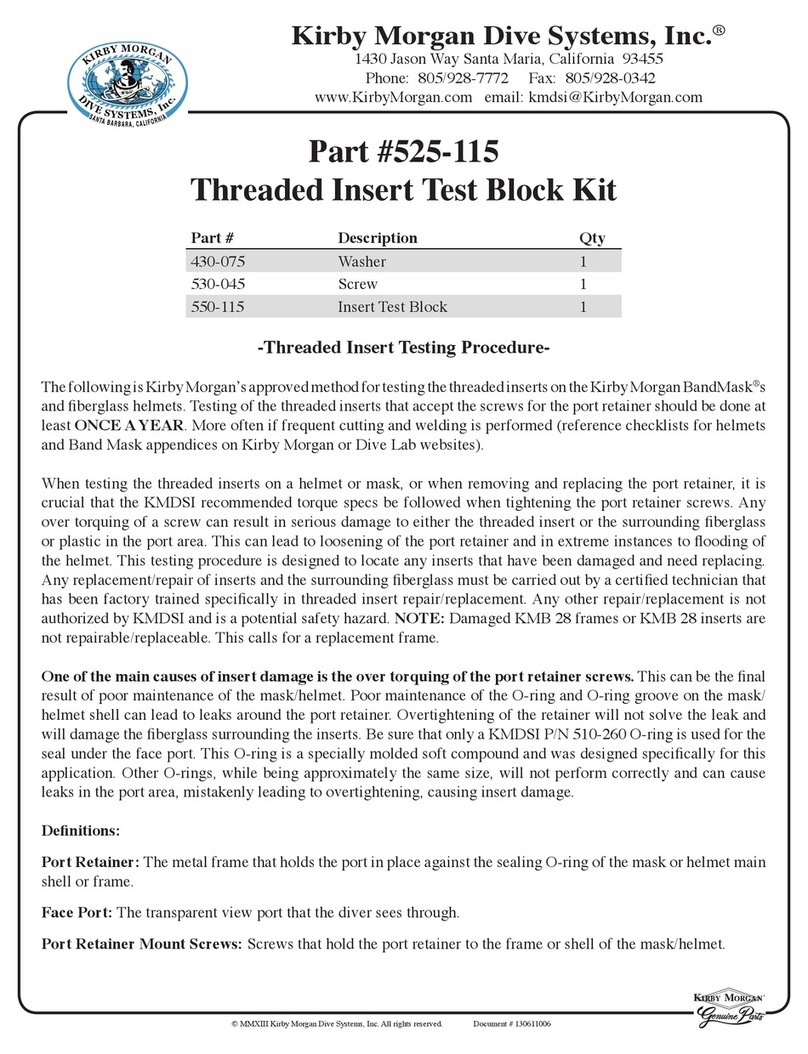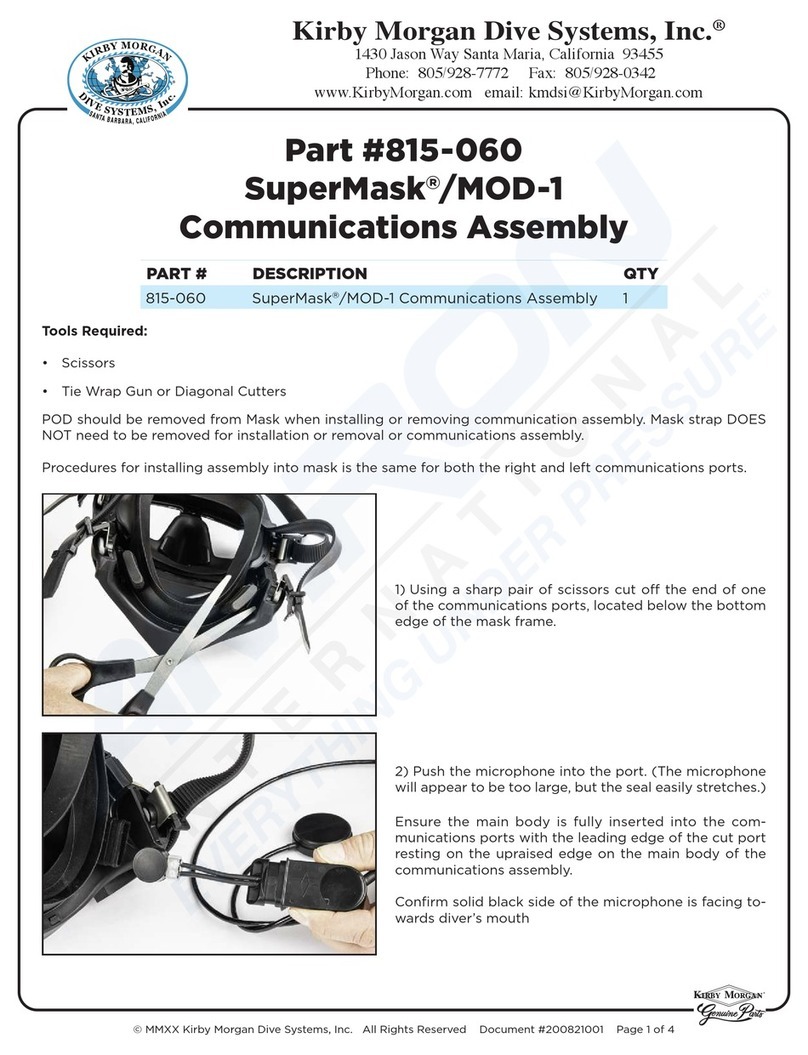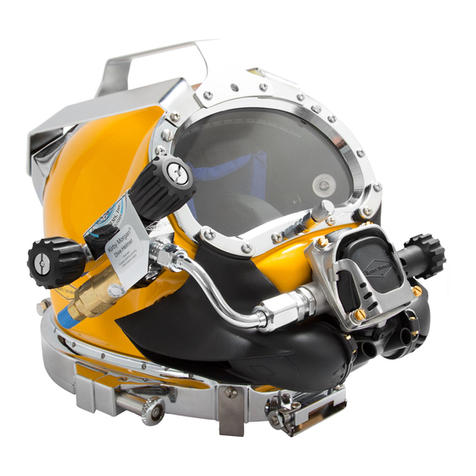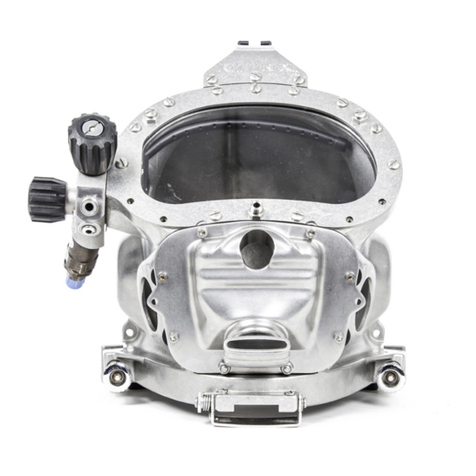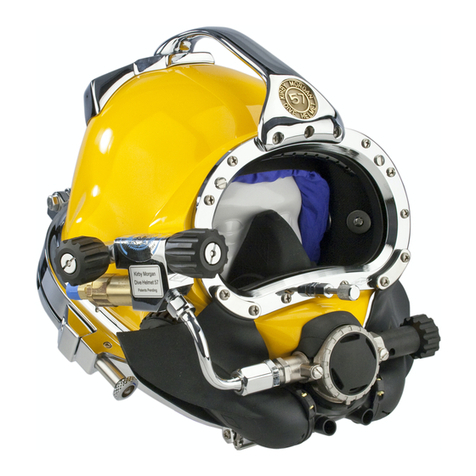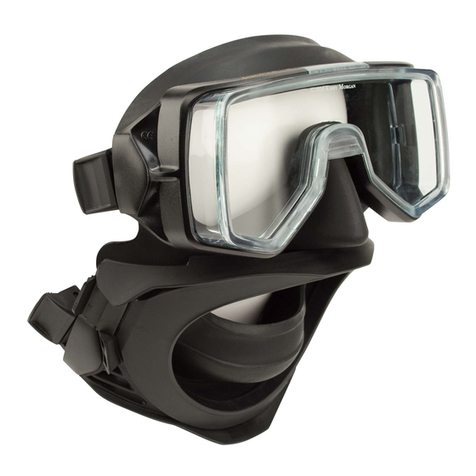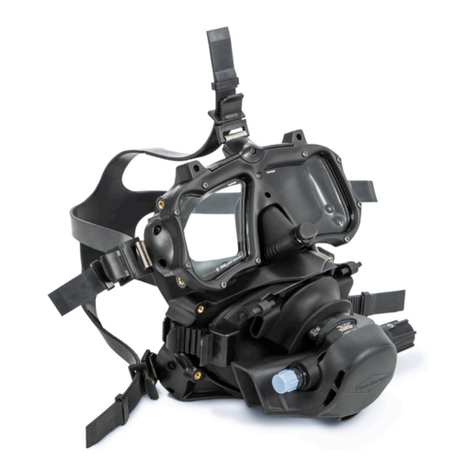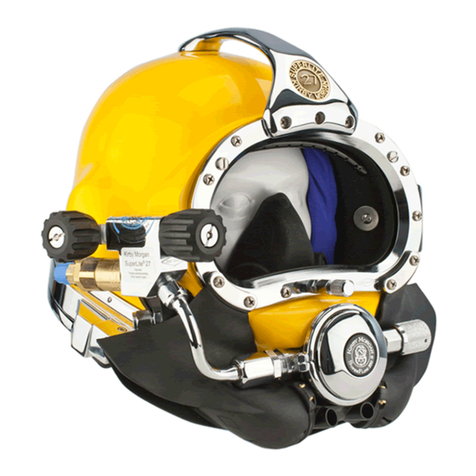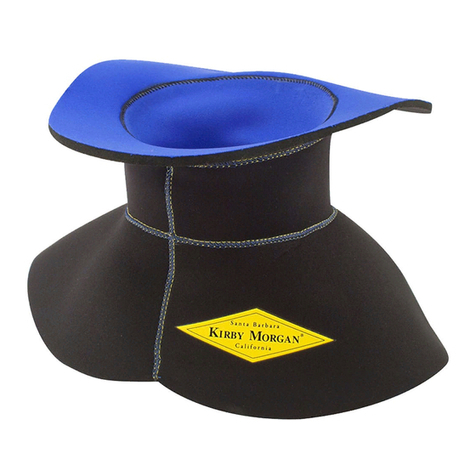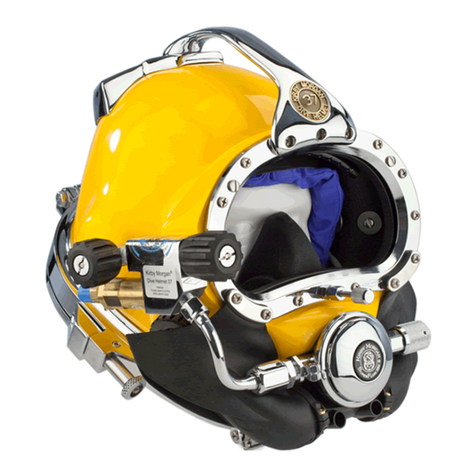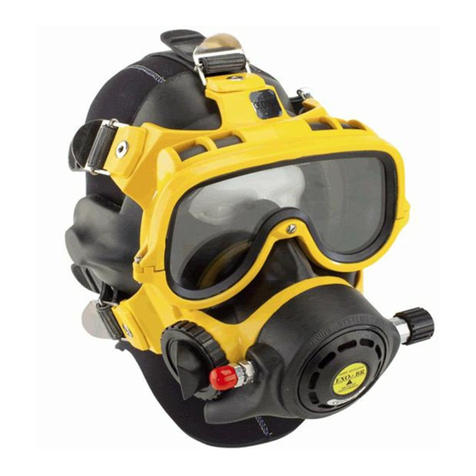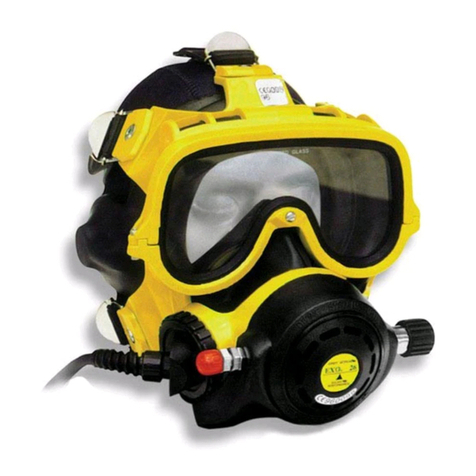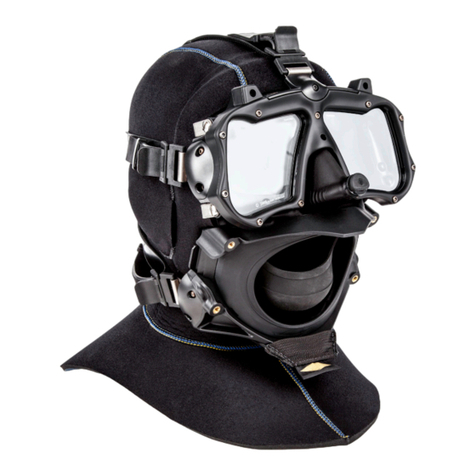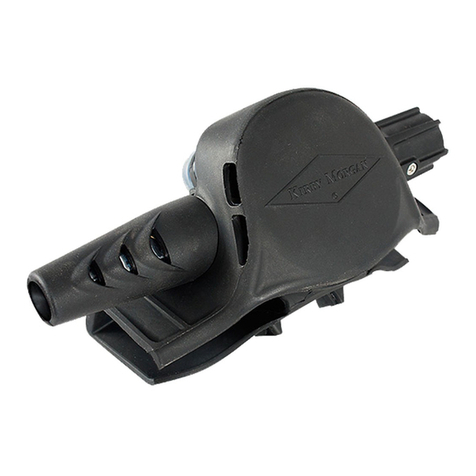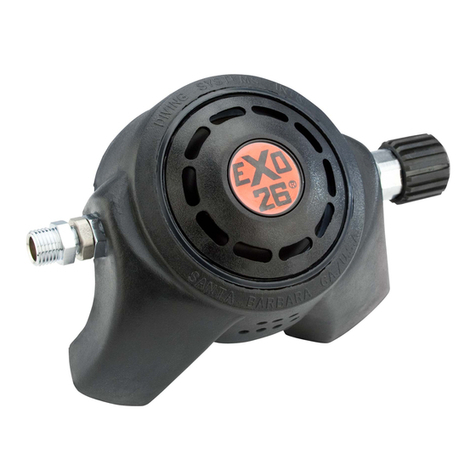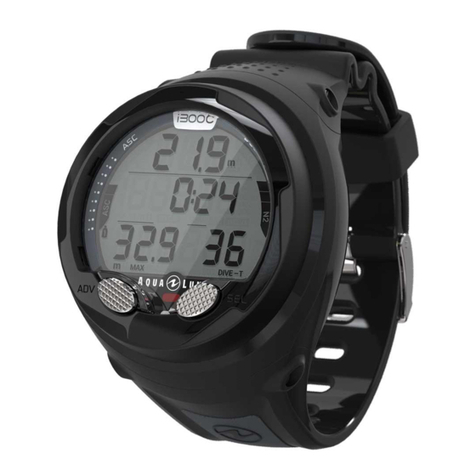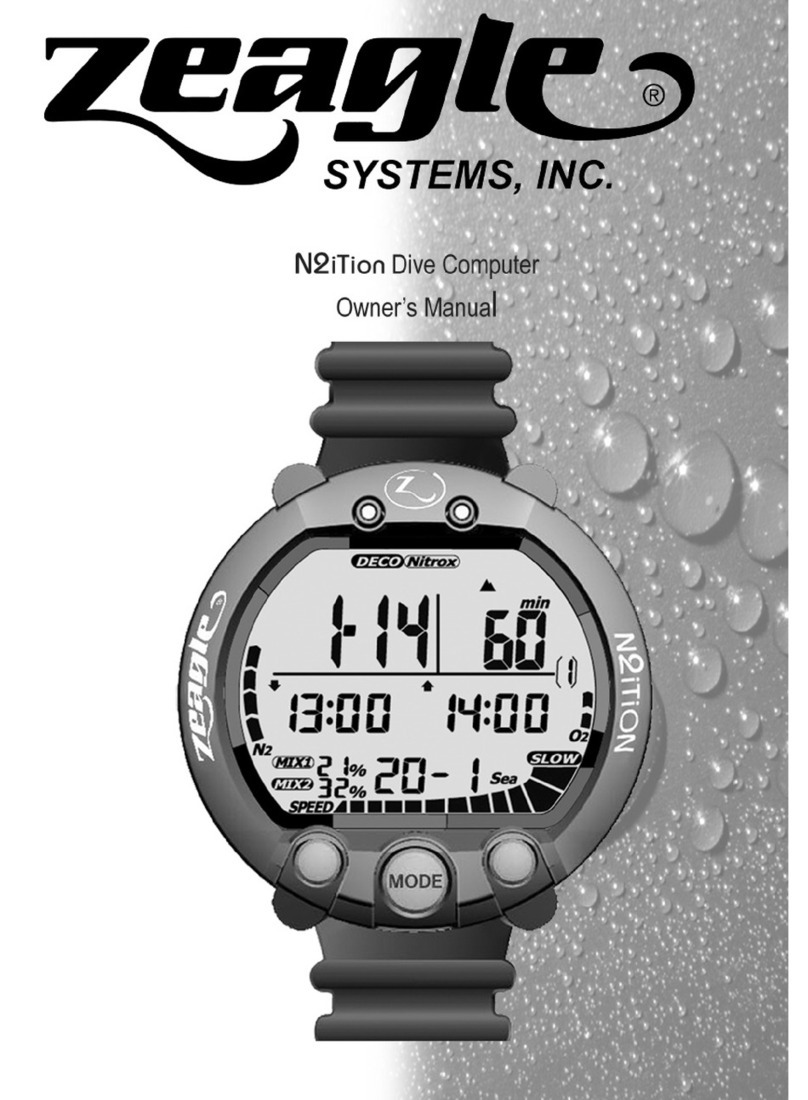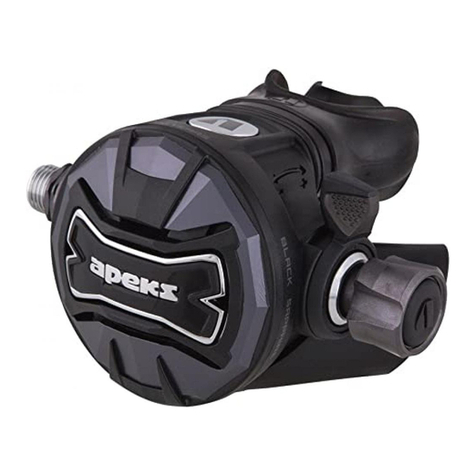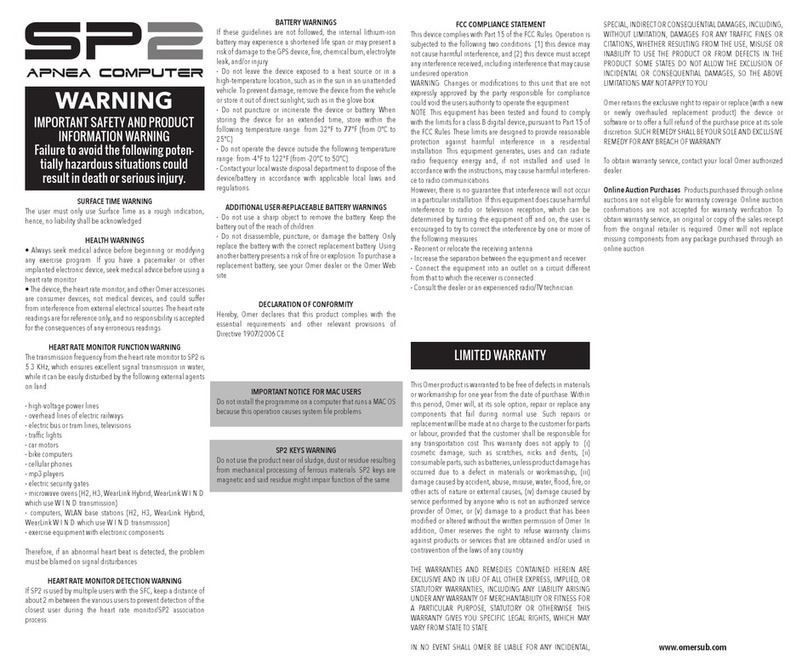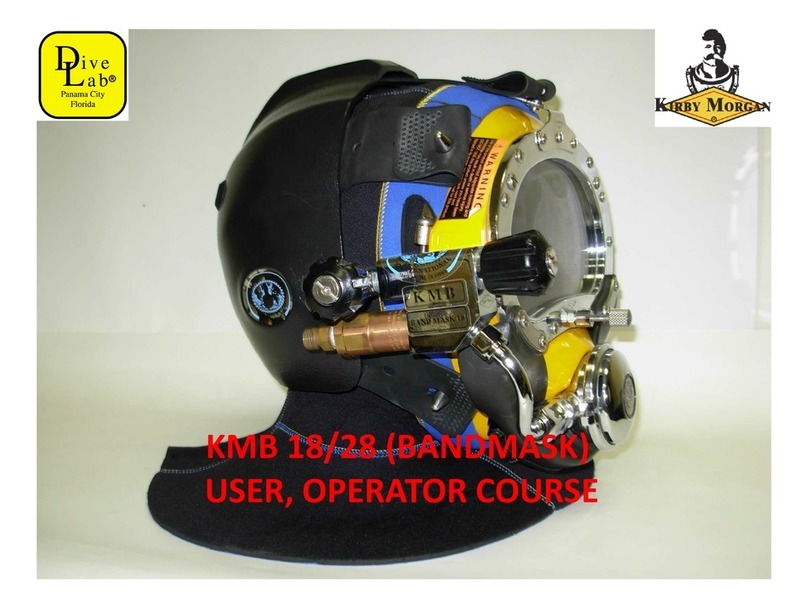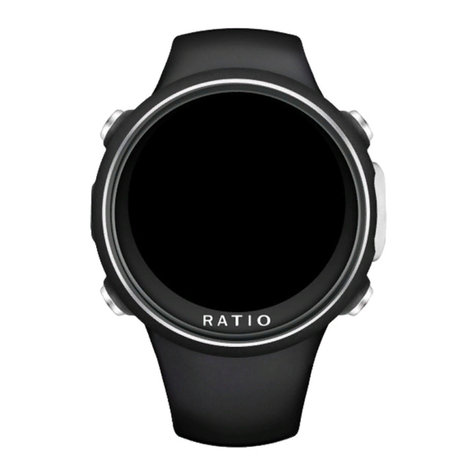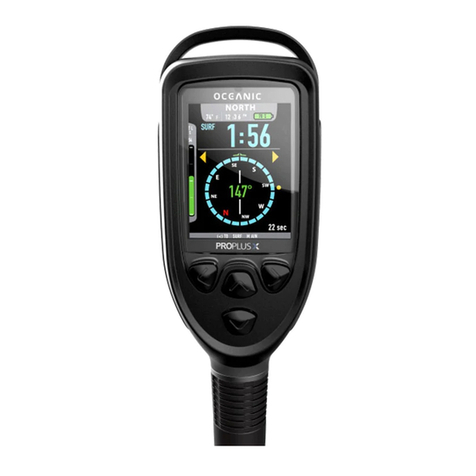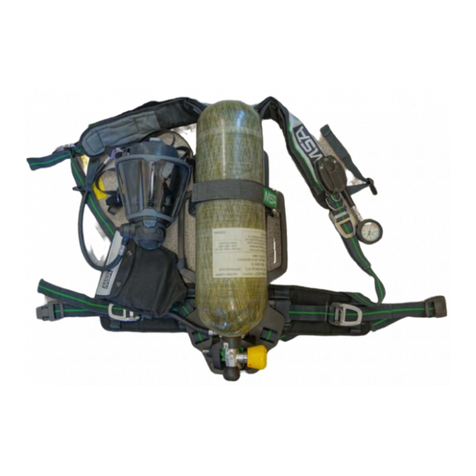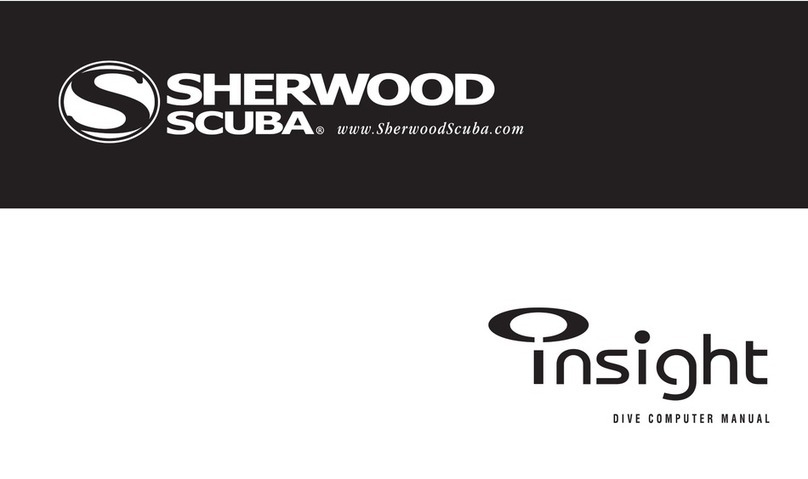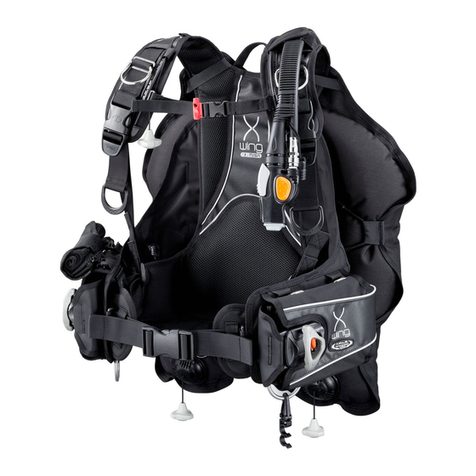
SUPERLITE-17 A/B
PAGE VI © Copyright 1970-2004 Kirby Morgan Dive Systems, Inc.All rights reserved. Document # 040809001, Aug. 2004
CHAPTER 6 BREATHING SYSTEM MAINTENANCE AND REPAIRS............................................ 41
6.1 Introduction ......................................................................................................................................... 41
6.2 One-way Valve .................................................................................................................................... 41
6.2.1 Disassembly of the One-way Valve............................................................................................... 41
6.2.2 Reassembly of the One-way Valve................................................................................................ 42
6.3 Side Block Assembly........................................................................................................................... 43
6.3.1 General........................................................................................................................................... 43
6.3.2 Side block Assembly Removal ...................................................................................................... 43
6.3.2.1 Removal of Bent Tube Assembly (17B).................................................................................. 43
6.3.2.2 Disconnecting the Hose Assembly (17A)................................................................................ 44
6.3.3 Separating the Side Block Assembly (70a/b) from the Helmet Shell (92).................................... 44
6.3.4 Side block Assembly Replacement................................................................................................ 45
6.4 Defogger Valve .................................................................................................................................... 46
6.4.1 Disassembly of the Defogger Valve (32-41) ................................................................................. 46
6.4.2 Cleaning and Lubricating use Section 5.3.2 .................................................................................. 47
6.4.3 Reassembly of the Defogger Valve ............................................................................................... 47
6.5 Emergency Valve Assembly (58)......................................................................................................... 48
6.5.1 Disassembly of the Emergency Valve Assembly (58)................................................................... 48
6.5.2 Cleaning (See Section 5.3.2 and Lubricating section 5.3.1).......................................................... 49
6.5.3 Reassembly of Emergency Valve (50)........................................................................................... 50
6.6 Bent Tube Assembly............................................................................................................................ 51
6.6.1 General........................................................................................................................................... 51
6.6.2 Removal of the Bent Tube Assembly ............................................................................................ 51
6.6.3 Inspection of Bent Tube Assembly................................................................................................ 52
6.6.4 Reinstallation of Bent Tube Assembly .......................................................................................... 52
6.7 Hose Assembly (SL-17A only)............................................................................................................ 52
6.7.1 Hose Assembly Removal............................................................................................................... 52
6.7.2 Hose Assembly Inspection “A style side block” ........................................................................... 52
6.7.3 O-Ring Replacement ..................................................................................................................... 53
6.7.4 Hose Assembly Replacement ........................................................................................................ 53
6.8 Demand Regulator............................................................................................................................... 53
6.8.1 Demand Regulator Test for Correct Adjustment, Regulator Fully Assembled: ............................ 53
6.8.2 Inspection of Regulator Body Interior........................................................................................... 54
6.8.3 Demand Regulator Bias Adjustment Servicing, Demand Regulator on the Helmet. .................... 55
6.8.4 Reassembly of Adjustment System ............................................................................................... 56
6.8.5 Demand Regulator Assembly Removal From Helmet .................................................................. 57
6.8.6 Disassembly of the Demand Regulator ......................................................................................... 57
6.8.7 Inspection of Demand Regulator Parts.......................................................................................... 58
6.8.8 Cleaning and Inspection of Demand Regulator Parts.................................................................... 59
6.8.9 Reassembly of the Demand Regulator .......................................................................................... 59
6.8.10 Tuning the Regulator ................................................................................................................... 61
Important Notes on RegulatorAdjustment........................................................................................... 62
6.8.11 Regulator Steady Flows When Pressured Up - Key items to check per Section 6.8.10.............. 63
6.8.12 Regulator has Low or No Flow When Pressurized ..................................................................... 63
6.8.13 Unexplained Demand Regulator Free Flow: ............................................................................... 63
6.9 Oral/Nasal............................................................................................................................................ 64
6.9.1 Oral/Nasal Removal ...................................................................................................................... 64
6.9.2 Inspection of Oral/Nasal................................................................................................................ 64
6.9.3 Oral/Nasal Replacement ................................................................................................................ 64
6.10 Whisker‘ Exhaust Systems: ............................................................................................................... 64
6.10.1 Standard Old Style Single Exhaust Whisker‘ PN# 510-554 ....................................................... 65
6.10.2 Reinstalling the Whisker ............................................................................................................. 66
6.10.3 Double Exhaust Whisker Cleaning and Overhaul, Whisker PN# 525-102 ................................ 66
